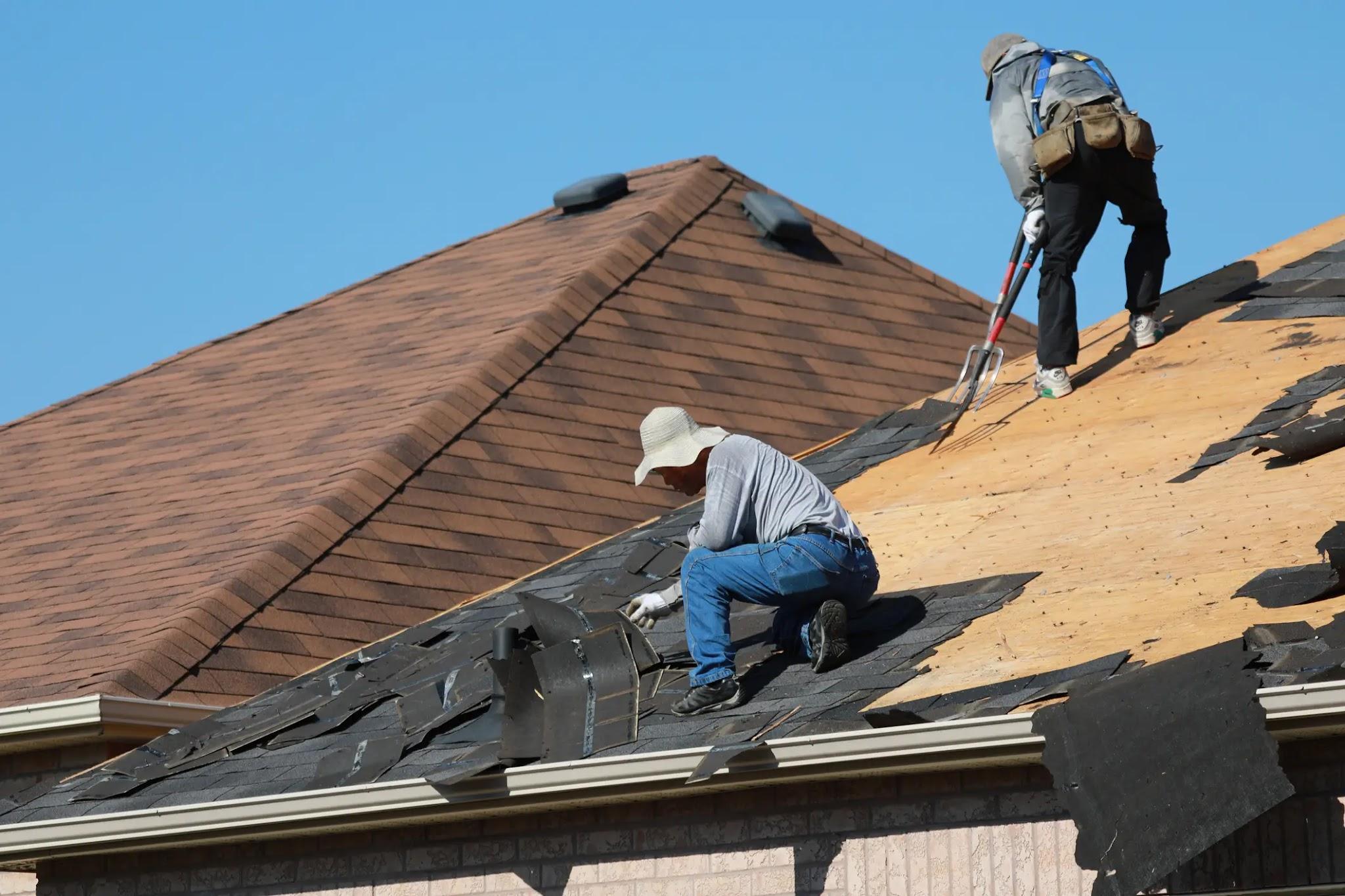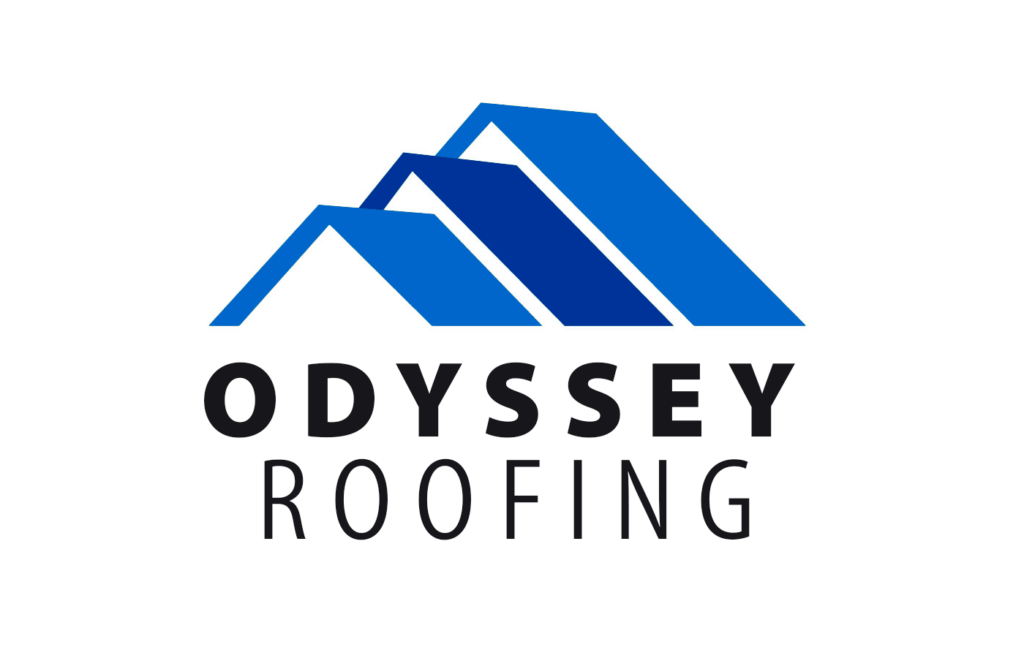Which is Better: Roof Repair vs Replacement

Should you repair or replace your roof? As a rule of thumb, if the cost of repairs is less than 30% to 50% of what a new roof would cost, and if your roofing system is old, opting for replacement might be the wiser choice.
However, this is not always the case. Other factors, such as the overall condition of the existing roofing, historical weather impacts, and your long-term housing plans, also play critical roles in this complex decision-making process.
Keep reading to discover how to make an informed decision about securing the condition and longevity of your home’s roof. Making an informed decision can save you from costly mistakes in your roof maintenance.
Understanding Roof Repair vs Replacement
Repairing or replacing your roofing structure has benefits, and choosing the right one depends on various factors.
Let’s break down the differences to help you make an informed decision.
The Basics of Roof Repair
Roof repair involves fixing specific issues or areas of roofing damage. This can include patching leaks, replacing damaged shingles, or fixing the deck beneath the roofing material. It’s needed for residential homes to address minor issues before they escalate, helping to avoid the need for a full replacement.
The Basics of Roof Replacement
Roof replacement means replacing the entire roof. This process involves removing the old materials, inspecting and repairing the deck, and installing a new roofing system. It’s significant for homes with old roofing or when the damage is extensive and repairs won’t last as long. Although usually more expensive, it ensures the roofing system will protect your home for many years.
Assessing Roof Problems in Your Home
Understanding where to look for potential roofing system issues is crucial. It helps you catch problems early, demonstrating your responsibility and proactive approach to home maintenance.
Roof Surface
Inspect the roofing surface for overall condition. This area often shows the first signs of wear and tear. Look for missing shingles, cracks, and curling. These indicate that the material might be nearing the end of its lifespan and might need minor repairs or replacement.
Valleys
Valleys are where two roof planes meet. Due to the increased water flow, they are prone to leaks. Check for worn or loose shingles. Damaged valleys can cause significant leaks, affecting the extent of the damage.
Vents and Chimneys
These areas often have flashing, which can deteriorate over time. Flashing helps seal these structures against water penetration. Look for rust, cracks, or missing flashing. Issues here can lead to leaks and affect your decision on repairs.
Gutters
Gutters direct water away from your system and home. They also collect debris, which can indicate roof condition. Remove any debris and check for shingle granules in the gutter. Granules in the gutter can indicate that shingles are nearing the end of their lifespan.
Attic
The attic can provide clues that might not be visible from the outside. You need a thorough inspection for water stains, mold, or light coming through the roofing structure. These signs indicate leaks or gaps that need attention.
Choosing Between Repair or Replace Roof Shingles
Deciding whether to repair or replace your roof shingles can significantly affect the longevity and safety of your home. Here’s how to determine what’s best for your situation.
Choose Roof Repair if:
- The damage is confined to a small area. If there are only a few missing or damaged shingles, you can repair them without replacing the whole roof.
- Your roof is relatively new. If the condition of your roofing system is generally good and it’s not nearing the end of its lifespan, a repair can be sufficient.
- There are only a few layers of shingles. If your system has just one layer of shingle roof, it might be easier and more cost-effective to repair rather than getting a new roof.
Choose Replace Roof Shingles if:
- The damage is extensive. If the signs of damage cover a large portion of the structure, replacing the roofing system is better.
- The roof is old and might only last a while, even after repairs. Replacing it could ensure better protection and longevity.
- There are multiple layers of shingles. It may be challenging to match and repair if there are several layers, making replacement a more practical option.
What to Consider When Replacing a Roof
Knowing what to consider when replacing a roofing structure helps you make informed decisions and avoid costly mistakes. Each factor plays a role in the overall reliability of your new roof.
Here are the essential points to keep in mind:
1. Types of Roofing Materials
Different materials offer various benefits. Consider durability, aesthetics, and climate suitability when choosing the type. Some materials are better suited for specific weather conditions, ensuring longevity and performance.
2. Cost of Replacing
The repair costs can vary widely depending on the size and material chosen. Get multiple quotes to compare prices and services. It’s also important to factor in potential hidden costs such as labor and disposal fees.
3. Condition of the Roofing Deck
Check if the underlying deck needs to be replaced. This can impact the overall cost and duration of the project. A damaged deck may require additional repairs, extending the timeline and increasing expenses.
4. Type of Roof
The type of roofing system you have influenced the replacement process. Steep roofs or those with many angles may be more complex and expensive to replace. This complexity can affect the time required and the project’s overall cost.
5. Timing
Consider the best time for a replacement. Avoiding extreme weather conditions can ensure a smoother process and better results. Planning can help you schedule the work during optimal weather, minimizing potential delays and complications.
6. Permits and Regulations
Check local building codes and obtain necessary permits. Ensuring your project covers roofing regulations can prevent legal issues. This step helps avoid fines and ensures your project is up to standard.
7. Removal of Old Materials
Decide if the old roofing tiles will be removed or covered with new material. Removal adds to the cost but may provide a better long-term solution. Covering old materials can lead to issues, so consider the pros and cons carefully.
8. Warranty and Insurance
Look into warranties offered by contractors and manufacturers. Verify your insurance coverage for potential damages during the replacement.
9. Contractor Selection
Choose a reputable contractor with experience in the type of roof you have. Read reviews and ask for references to ensure quality work. A skilled contractor can make a significant difference in the durability and appearance of your new roof.
10. Future Maintenance
Plan for future upkeep. Knowing the maintenance needs of your new roofing project helps preserve its condition and extend its lifespan.
Transform Your Home—Partner with Odyssey Home Remodeling for Your Roof Repair and Replacement
Odyssey Home Remodeling offers comprehensive roof repair and replacement services tailored to your needs. Our skilled team assesses the condition of your roof, provides honest recommendations, and delivers quality workmanship. We offer the best solutions and use of durable materials that protect your home for years to come.
Ready to transform your home? Call us at 855-913-3770 or get a free estimate here.
Frequently Asked Questions
Can environmental factors influence whether to repair or replace?
Environmental conditions such as frequent storms, heavy snowfall, or high winds often necessitate a comprehensive assessment of your home’s exterior. Replacing the structure can provide better long-term protection. If the damage is widespread or severe, a simple repair might suffice for minor issues limited to a small area, ensuring cost-effectiveness and maintaining integrity.
How do building codes affect the decision to repair or replace?
Compliance with local building codes is crucial when deciding whether to repair or replace. If your home does not meet these standards, replacing parts or all of the structure may be necessary to ensure safety and legality. This decision helps cover the cost of bringing your home up to code and avoid legal issues.
How does the appearance of my home’s roofing structure affect the decision?
The aesthetic condition of your home’s exterior plays a crucial role in this decision. Significant deterioration can diminish curb appeal and reduce property value, making replacement a valuable investment. Consider this part of your home improvement projects to enhance appearance and marketability.
Does the complexity of the structure influence the decision to repair or roof replacement?
The design and accessibility of your home’s exterior are critical factors. Complex or hard-to-reach areas may increase the cost of ongoing repairs, making replacement a more viable option. This decision can lead to excellent stability and reduced maintenance demands over time, streamlining home upkeep.
Why should I consider replacing my old roof rather than repairing It?
Replacing an old roof rather than repairing it can provide better protection and longevity. Experienced roofing companies recommend regular inspections to identify issues like granule loss in asphalt shingles, which can compromise your roof’s integrity. A new metal roofing system installed by a professional roofing contractor can prevent roof problems and often offers a cost-effective solution per square foot, ensuring your home is safe and secure.
What are the advantages of choosing metal over asphalt shingles?
Choosing metal over asphalt shingles offers excellent durability and longevity. Metal systems installed by skilled roofers can better withstand harsh weather conditions and require less maintenance. This option can be more cost-effective in the long run, providing excellent value per square foot and enhancing your home’s overall protection.
Why choose a professional contractor for installation?
Hiring a professional contractor ensures the job is done correctly and safely. Experienced contractors have the skills and knowledge to install systems like metal panels, providing better protection and longevity. They can also offer warranties and follow industry standards, giving you peace of mind.
How do I decide between metal and asphalt shingles?
Consider factors such as durability, maintenance, and cost when making this decision. Metal systems offer greater longevity and require less upkeep than asphalt shingles. Consulting with an experienced roofing contractor can provide insights into which option best suits your home’s needs and budget.


